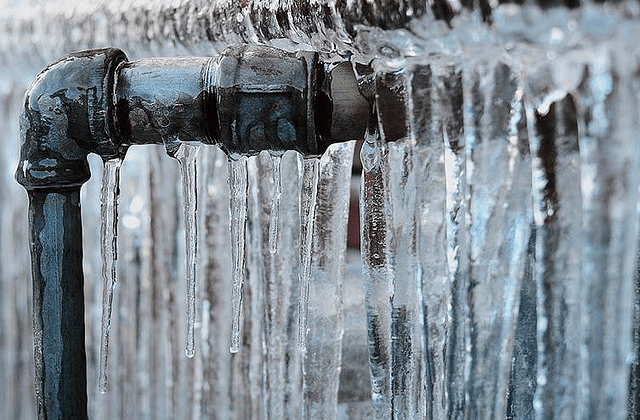Avoiding Frozen Pipes in Winter: Expert Tips
Avoiding Frozen Pipes in Winter: Expert Tips
Blog Article
Everybody has their own theory involving How to Prevent Your Pipes From Freezing.

Winter can damage your pipes, specifically by freezing pipelines. Below's exactly how to stop it from happening and what to do if it does.
Intro
As temperature levels decrease, the threat of frozen pipelines increases, possibly causing pricey fixings and water damages. Recognizing how to avoid icy pipes is vital for property owners in cool environments.
Avoidance Tips
Protecting vulnerable pipelines
Wrap pipelines in insulation sleeves or use warmth tape to secure them from freezing temperatures. Focus on pipelines in unheated or external locations of the home.
Home heating methods
Maintain interior rooms sufficiently heated, specifically areas with plumbing. Open cupboard doors to allow warm air to flow around pipes under sinks.
Exactly how to identify icy pipelines
Seek lowered water circulation from faucets, unusual smells or noises from pipelines, and noticeable frost on subjected pipes.
Long-Term Solutions
Architectural changes
Consider rerouting pipes far from exterior wall surfaces or unheated areas. Add added insulation to attics, basements, and crawl spaces.
Updating insulation
Buy high-quality insulation for pipelines, attics, and walls. Appropriate insulation helps maintain regular temperature levels and minimizes the danger of frozen pipes.
Shielding Exterior Pipes
Yard pipes and outdoor faucets
Detach and drain pipes yard tubes prior to winter months. Set up frost-proof spigots or cover exterior taps with shielded caps.
Understanding Icy Pipelines
What triggers pipelines to freeze?
Pipes freeze when revealed to temperature levels listed below 32 ° F (0 ° C) for expanded periods. As water inside the pipelines freezes, it expands, putting pressure on the pipe wall surfaces and possibly triggering them to burst.
Risks and problems
Frozen pipes can cause supply of water interruptions, residential or commercial property damage, and costly repair services. Ruptured pipes can flood homes and trigger considerable structural damages.
Signs of Frozen Pipeline
Determining icy pipes early can prevent them from bursting.
What to Do If Your Pipes Freeze
Immediate actions to take
If you presume icy pipelines, maintain taps open to soothe pressure as the ice melts. Utilize a hairdryer or towels soaked in warm water to thaw pipes gradually.
Conclusion
Stopping frozen pipelines calls for proactive measures and quick actions. By comprehending the causes, signs, and safety nets, property owners can protect their plumbing throughout cold weather.
5 Ways to Prevent Frozen Pipes
Drain Outdoor Faucets and Disconnect Hoses
First, close the shut-off valve that controls the flow of water in the pipe to your outdoor faucet. Then, head outside to disconnect and drain your hose and open the outdoor faucet to allow the water to completely drain out of the line. Turn off the faucet when done. Finally, head back to the shut-off valve and drain the remaining water inside the pipe into a bucket or container. Additionally, if you have a home irrigation system, you should consider hiring an expert to clear the system of water each year.
Insulate Pipes
One of the best and most cost-effective methods for preventing frozen water pipes is to wrap your pipes with insulation. This is especially important for areas in your home that aren’t exposed to heat, such as an attic. We suggest using foam sleeves, which can typically be found at your local hardware store.
Keep Heat Running at 65
Your pipes are located inside your walls, and the temperature there is much colder than the rest of the house. To prevent your pipes from freezing, The Insurance Information Institute suggests that you keep your home heated to at least 65 degrees, even when traveling. You may want to invest in smart devices that can keep an eye on the temperature in your home while you’re away.
Leave Water Dripping
Moving water — even a small trickle — can prevent ice from forming inside your pipes. When freezing temps are imminent, start a drip of water from all faucets that serve exposed pipes. Leaving a few faucets running will also help relieve pressure inside the pipes and help prevent a rupture if the water inside freezes.
Open Cupboard Doors
Warm your kitchen and bathroom pipes by opening cupboards and vanities. You should also leave your interior doors ajar to help warm air circulate evenly throughout your home.
:strip_icc()/snow-outdoor-faucet-pipes-4af65d1e5e904fb1aa7bf74071fe5d89.jpg)
I am very eager about Winter Plumbing Precautions: Preventing Frozen Pipes and I hope you appreciated my article. Loved our post? Please share it. Let others find it. Thank you for being here. Don't hesitate to visit our site back soon.
Click Here Report this page